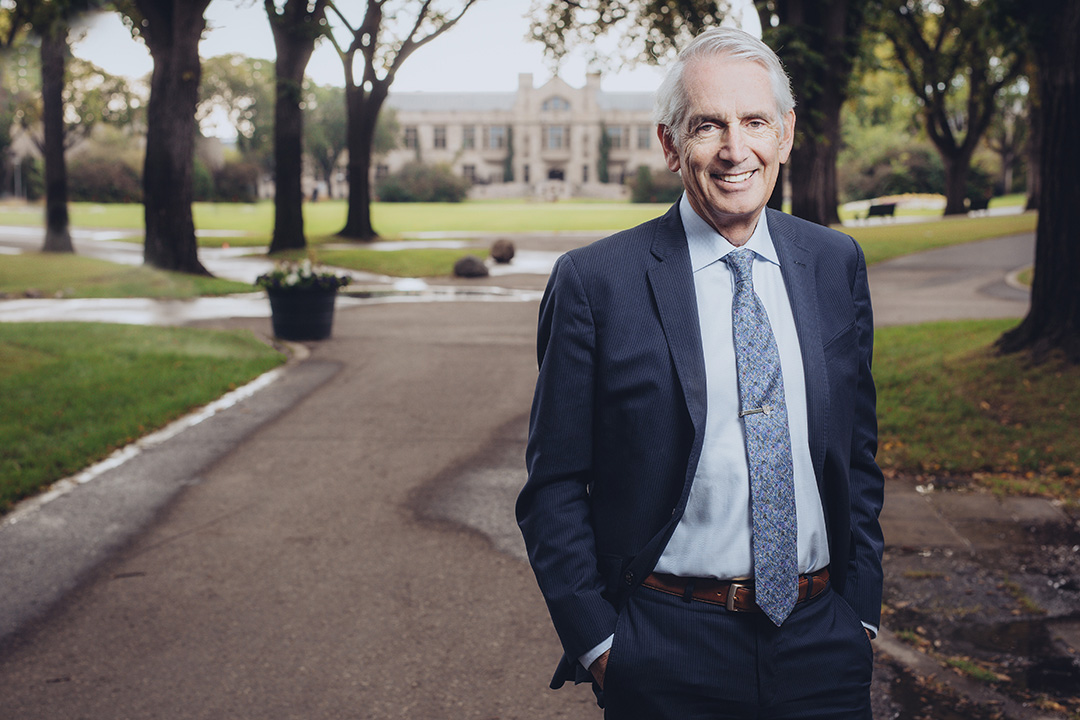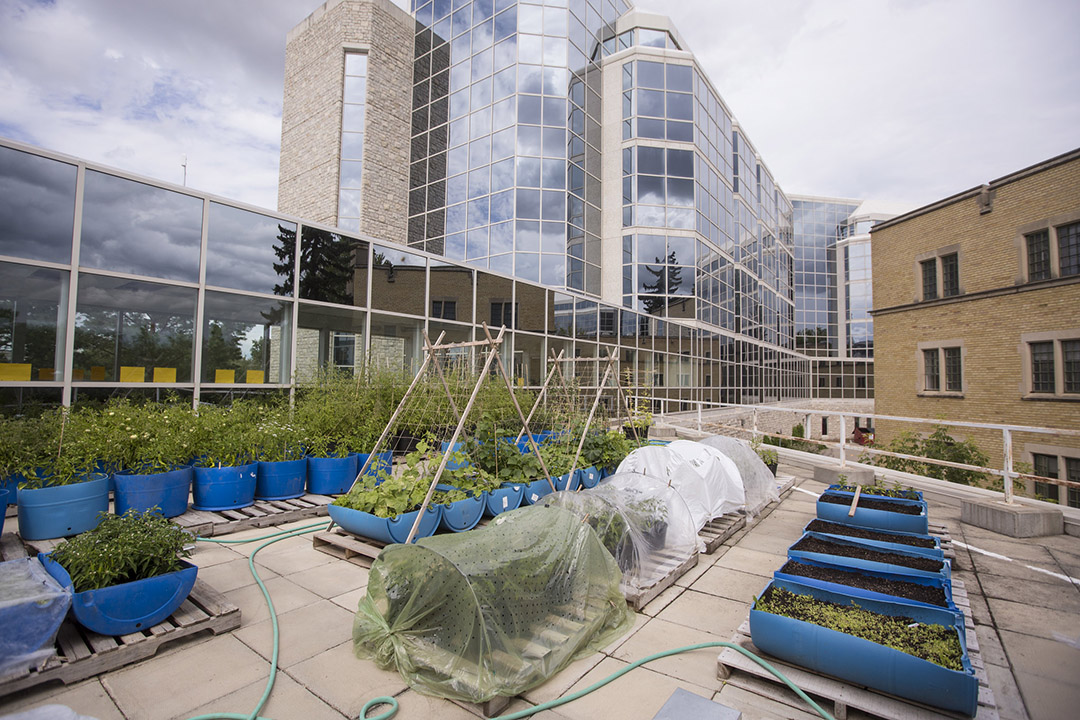
USask adopts first Sustainability Strategy
The University of Saskatchewan (USask) has adopted its first Sustainability Strategy as a key pillar of guiding what President Peter Stoicheff describes as “unapologetically ambitious and appropriately impatient actions” to become The University the World Needs.
By Sarath Peiris“As both a large organization with a lot of infrastructure and, more importantly, a place of learning with an academic and research mission, we can do a lot in support of environmental and other forms of sustainability that other organizations can’t,” Stoicheff said.
“We can train people. We can do research that promotes and makes sustainability possible. We can develop and influence public policy. We graduate people who will become public servants and members of governments, and are part of local and national conversations on this important issue. This is why it’s imperative to be strategic about all of this at our university.”
Informed by the president’s Sustainability Advisory Circle, and approved by University Council, the Board of Governors, and—as of April 24—University Senate, the new comprehensive strategy is a major step forward in the president’s commitment to sustainability after being appointed USask president in 2015. In his first address to the university’s General Academic Assembly in 2016, Stoicheff outlined his vision for the future, noting the foundational walls would be sustainability, connectivity, diversity, and creativity—principles that remain at the heart of the University Plan 2025 to be a globally relevant.
The inaugural sustainability plan commits USask to action on achieving the United Nations’ 17 Sustainable Development Goals (SDG) by 2030, among them zero hunger, good health and well-being, clean water and sanitation, and strong peace and justice institutions. Many of the SDGs align closely with USask’s signature areas of research, including food security, water security, and One Health.
“If I were to boil down the spirit of this whole plan, I would say that it moves the sustainability agenda across every aspect of the university,” said Stoicheff.
“If sustainability is to be a pillar of the university, ongoing governance and operational sustainability efforts have to be connected with the whole academic and research side as well, because we are more than a collection of facilities.”
Stoicheff said sustainability needs to be built into a broad spectrum of courses and degrees, and become part of the student experience, with specific support earmarked for sustainability research.
Stoicheff said it’s not surprising that leaders of the University of Saskatchewan Students’ Union approached his office in 2016 to sign a memorandum of understanding that commits to working together to support, promote and champion sustainability initiatives on campus—a request he was happy to oblige and fund.
“That was a very influential moment for me, when I realized that although I was saying some things about sustainability, the students were really behind this commitment and if I wasn’t part of it, they would be leading it some other way,” he said.

While there’s concern that mitigation measures are unaffordable, Stoicheff said: “One way or another, we are going to have to come to terms with the university being more environmentally sustainable. That’s going to cost more money no matter how you look at it. It’s going to cost a lot less money if you can be strategic about it.”
USask’s Sustainability Strategy is framed around five commitments, five goals and 17 actions geared to achieving the SDGs:
- Commitment 1 is to be responsive to the university’s social, economic, environmental and cultural settings, and to influence and be influenced by them as solutions to sustainability challenges are created, mobilized, and shared.
- Commitment 2 is to foster an entrepreneurial campus spirit, and use campus operations and community as a living laboratory to develop, scale up, and share sustainability solutions. The goal by 2030 is to reduce university greenhouse gas emissions by 45 per cent from 2010 levels, leveraging USask’s research and cutting-edge discoveries to help develop energy-efficient solutions, and to reach net zero by 2050.
- Commitment 3 is empowering action by supporting a generation of learners and achievers to shift mindsets and expand skillsets to accelerate action to achieve the SDGs. The goal is to create new forms of teaching and learning that produce engaged, enlightened, empathetic, ethical and empowered citizens.
- Commitment 4 is to capitalize on strengths by bringing together the campus community to create knowledges focused on designing and implementing innovative and workable solutions to sustainability challenges.
- Commitment 5 is to catalyze social change by promoting, engaging, and supporting the sharing of knowledge, expertise, and experiences to effect needed social changes.

